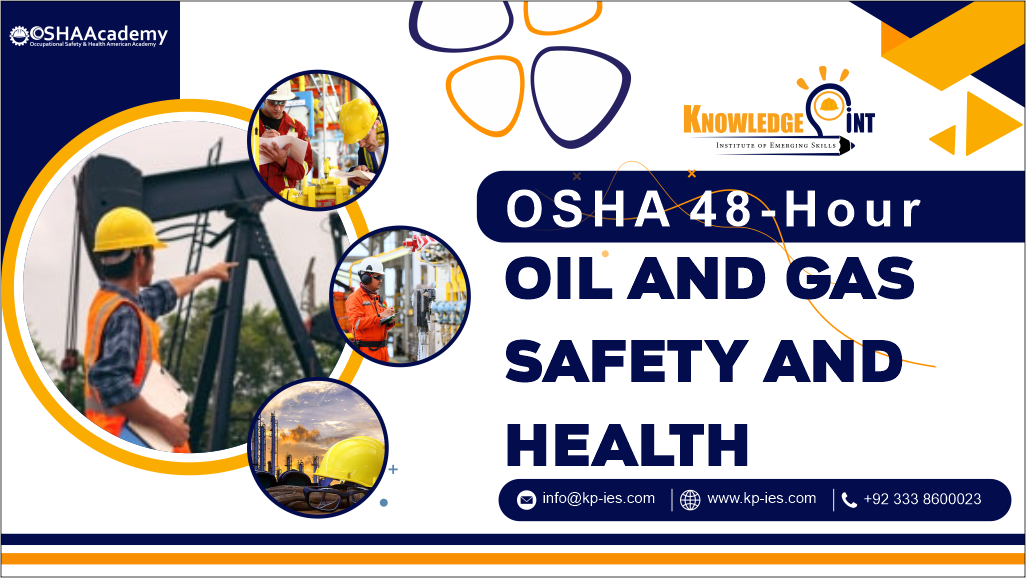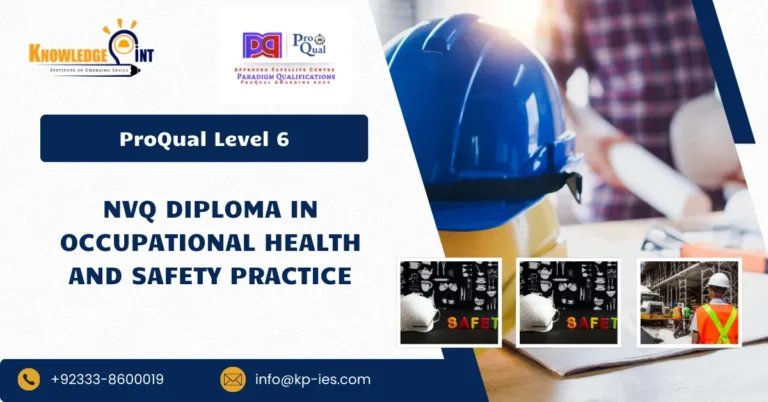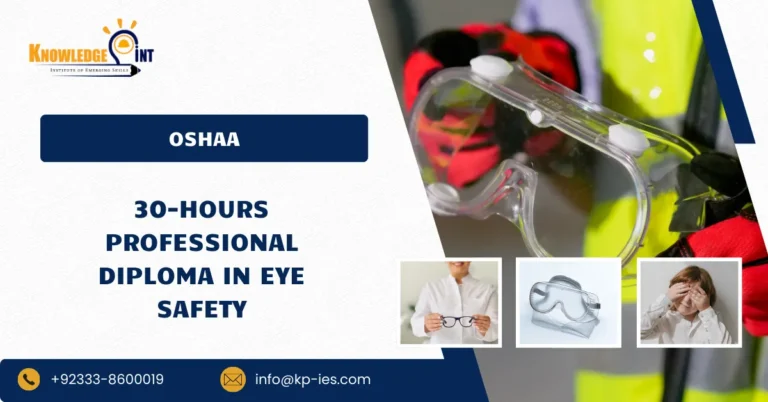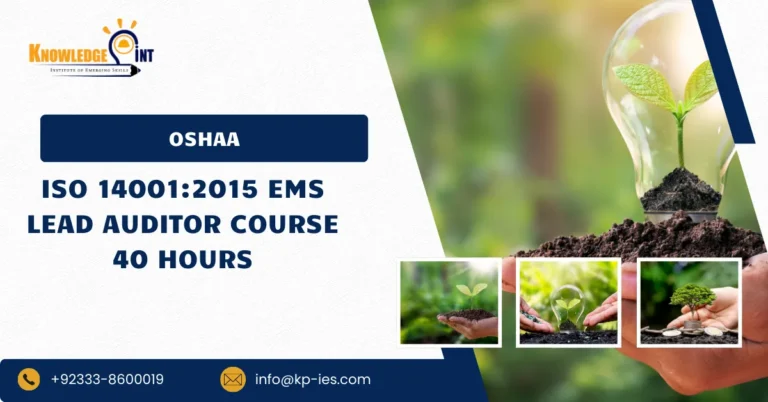The oil and gas industry is inherently high-risk, demanding stringent safety protocols and well-trained personnel to prevent accidents and ensure the well-being of workers. One effective way to achieve this is through specialized training programs like the OSHA 48-Hour Oil and Gas Safety and Health course. .
The oil and gas industry faces unique hazards, including exposure to toxic chemicals, high-pressure systems, explosive atmospheres, and heavy machinery. These risks necessitate a robust safety culture and well-informed workforce. The OSHA 48-Hour Oil and Gas Safety and Health course is designed to provide essential safety training, equipping workers with the knowledge and skills required to mitigate these risks effectively.
The OSHA 48-Hour Oil and Gas Safety and Health program is a valuable investment for anyone working in the oil and gas industry. Its targeted training modules, emphasis on safety culture, and focus on regulatory compliance make it an essential tool for enhancing workplace safety. By participating in this program, workers and organizations can contribute to a safer, healthier, and more productive industry.
Safety should never be compromised, especially in high-risk environments like the oil and gas sector. Enroll in the OSHA 48-Hour Oil and Gas Safety and Health program today and take a proactive step towards a safer workplace.
Course Overview
The OSHA 48-Hour Oil and Gas Safety and Health consists of 12 mandatory units which are as follows.
The learning outcomes of OSHA 48-Hour Oil and Gas Safety and Health include:
1. Introduction to OSHA and the Oil and Gas Industry
- Understanding OSHA’s Mission and Role: Gain a comprehensive understanding of OSHA’s mission, role, and regulatory framework in the oil and gas industry.
- Recognizing Industry-Specific Safety Challenges: Identify key safety challenges and common hazards specific to the oil and gas sector.
- Employee and Employer Responsibilities: Understand the basic rights and responsibilities of both employers and employees under OSHA regulations.
2. Hazard Identification and Risk Assessment
- Identifying Hazards: Develop the ability to identify potential hazards in various oil and gas operations.
- Conducting Risk Assessments: Learn how to conduct thorough risk assessments to evaluate the likelihood and impact of identified hazards.
- Implementing Control Measures: Implement effective hazard control measures to mitigate risks and ensure a safer work environment.
3. Personal Protective Equipment (PPE)
- Types of PPE: Identify different types of PPE and their specific uses in the oil and gas industry.
- Proper Use and Maintenance: Properly select, use, and maintain PPE to ensure maximum protection for workers.
- Regulatory Requirements: Understand the regulatory requirements for PPE use and management in the workplace.
4. Process Safety Management (PSM)
- PSM Elements: Gain an understanding of the key elements of Process Safety Management and their application in the oil and gas industry.
- Preventing Hazardous Releases: Implement PSM principles to prevent the release of hazardous chemicals.
- PSM Audits: Conduct PSM audits to evaluate and improve the effectiveness of safety management systems.
5. Fire and Explosion Prevention
- Recognizing Hazards: Recognize fire and explosion hazards specific to oil and gas operations.
- Prevention Strategies: Implement effective prevention strategies and emergency response plans for fire and explosion incidents.
- Conducting Fire Risk Assessments: Learn how to conduct fire risk assessments and implement control measures to mitigate fire risks.
6. Confined Space Entry
- Identifying Confined Spaces: Identify confined spaces and understand the associated hazards.
- Safe Entry Procedures: Implement safe entry procedures, including atmospheric testing and monitoring.
- Emergency Protocols: Develop and practice rescue plans and emergency procedures for confined space incidents.
7. Hazard Communication (HAZCOM)
- HAZCOM Principles: Understand the principles of hazard communication and the Globally Harmonized System (GHS).
- Labeling and Safety Data Sheets (SDS): Properly label hazardous chemicals and create effective Safety Data Sheets.
- Employee Training: Train employees on HAZCOM standards and procedures to ensure effective communication of chemical hazards.
8. Emergency Response and Preparedness
- Developing Emergency Plans: Develop and implement comprehensive emergency response plans tailored to the oil and gas industry.
- Conducting Drills: Conduct emergency drills and training exercises to prepare for potential incidents.
- Evaluating Response Effectiveness: Evaluate the effectiveness of emergency response procedures and make necessary improvements.
9. Industrial Hygiene
- Recognizing Health Hazards: Recognize and evaluate workplace health hazards, including chemical, physical, and biological agents.
- Implementing Control Measures: Implement control measures to minimize exposure to health hazards.
- Monitoring and Assessments: Conduct industrial hygiene monitoring and assessments to ensure a safe and healthy work environment.
10. Environmental Protection
- Understanding Environmental Regulations: Gain knowledge of environmental regulations and their application to the oil and gas industry.
- Implementing Protection Measures: Implement environmental protection measures to prevent pollution and environmental damage.
- Conducting Environmental Assessments: Conduct environmental impact assessments and audits to ensure compliance and sustainability.
11. Transportation and Logistics Safety
- Identifying Transportation Hazards: Identify hazards associated with the transportation and logistics of oil and gas materials.
- Implementing Safety Measures: Implement safety measures for the safe handling, storage, and transportation of hazardous materials.
- Developing Safety Plans: Develop and follow transportation safety plans and procedures to minimize risks.
12. Recordkeeping and Reporting
- Understanding OSHA Requirements: Understand OSHA’s recordkeeping and reporting requirements specific to the oil and gas industry.
- Accurate Recordkeeping: Accurately record and report workplace injuries, illnesses, and incidents.
- Using Data for Improvement: Use recordkeeping data to identify trends and make data-driven decisions to improve workplace safety.
By the end of the OSHA 48-Hour Oil and Gas Safety and Health course, participants will have a solid foundation in these critical areas, enabling them to effectively manage safety and health risks in their workplaces.
Course Benefits of the OSHA 48-Hour Oil and Gas Safety and Health :
1. Specialized Expertise
- Auditing Proficiency: Gain specialized knowledge and skills in auditing energy management systems according to the ISO 50001:2018 standard.
- Industry Recognition: Earn a globally recognized qualification that demonstrates your proficiency as an energy management systems auditor.
2. Career Advancement
- Expanded Career Opportunities: Qualify for roles such as Lead Energy Auditor, Energy Management Consultant, or Compliance Officer.
- Higher Earning Potential: Enhance your value to employers and increase your earning potential with specialized expertise in energy management auditing.
3. Industry-Relevant Skills
- Practical Application: Acquire practical skills and techniques for planning, conducting, and documenting energy management system audits.
- Effective Communication: Develop communication skills to interact with auditees, audit teams, and stakeholders effectively.
4. Contribution to Sustainability
- Promotion of Energy Efficiency: Play a key role in promoting energy efficiency and reducing environmental impact within organizations.
- Support for Sustainable Practices: Assist organizations in implementing and maintaining energy management systems that support sustainability goals.
5. Quality Assurance
- Compliance Assurance: Help organizations achieve compliance with ISO 50001:2018 requirements and other relevant regulatory standards.
- Risk Mitigation: Identify areas of non-conformance and provide recommendations for corrective actions to mitigate risks.
6. Continuous Professional Development
- Lifelong Learning: Engage in continuous professional development by staying updated with the latest developments and trends in energy management auditing.
- Networking Opportunities: Connect with industry professionals, auditors, and experts, expanding your professional network and opportunities.
7. Organizational Benefits
- Improved Performance: Contribute to the improvement of organizational energy performance through effective auditing and recommendations for continuous improvement.
- Enhanced Reputation: Help organizations build a positive reputation for their commitment to energy management and sustainability practices.
8. Personal Growth
- Leadership Development: Develop leadership skills to effectively manage audit teams, delegate tasks, and ensure audit objectives are met.
- Confidence Boost: Gain confidence in your abilities as an energy management systems auditor through practical training and hands-on experience.
As the oil and gas industry evolves, so too must the safety training programs designed to protect its workers. The OSHA 48-Hour Oil and Gas Safety and Health course, while comprehensive in its current form, can be enhanced and expanded to address new challenges, incorporate technological advancements, and improve training effectiveness. Here’s a look at the potential future progression of this essential training program:
1. Integration of Emerging Technologies
Virtual and Augmented Reality (VR/AR)
- Enhanced Training Simulations: Use VR and AR to create immersive, realistic training simulations for hazard identification, emergency response, and confined space entry.
- Interactive Learning Modules: Develop interactive learning modules that allow participants to engage with training content in a more hands-on and practical manner.
Online Learning Platforms
- Remote Learning Options: Expand the course to include robust online learning options, making it accessible to a global audience and allowing for flexible learning schedules.
- Digital Assessments: Implement digital assessments and quizzes to reinforce learning and provide immediate feedback to participants.
2. Emphasis on Psychological Safety and Mental Health
Mental Health Awareness
- Mental Health Training: Include modules focused on recognizing and addressing mental health issues in the workplace, emphasizing the importance of psychological safety.
- Stress Management Techniques: Teach stress management techniques and coping strategies specific to the high-pressure environment of the oil and gas industry.
3. Enhanced Environmental and Sustainability Focus
Sustainable Practices
- Green Technologies: Incorporate training on the latest sustainable practices and green technologies being adopted in the oil and gas industry.
- Environmental Impact: Emphasize the importance of reducing environmental impact and complying with new environmental regulations and standards.
Climate Change Adaptation
- Regulatory Updates: Regularly update course content to reflect new regulations and guidelines related to climate change.
- Adaptation Strategies: Train participants on how to adapt safety practices to address the challenges posed by climate change.
4. Customization and Specialization
Role-Specific Training
- Specialized Modules: Develop specialized training modules tailored to specific roles within the oil and gas industry, such as drilling, refining, and logistics.
- Advanced Courses: Offer advanced courses for participants who wish to deepen their knowledge in specific areas of oil and gas safety.
Regional Adaptation
- Localized Content: Adapt training materials to address regional safety challenges and regulatory requirements, ensuring relevance to different geographical areas.
- Cultural Considerations: Incorporate local languages and cultural considerations to enhance understanding and compliance.
5. Continuous Professional Development
Lifelong Learning Opportunities
- Ongoing Education: Provide opportunities for continuous professional development through workshops, seminars, and advanced certifications.
- Industry Conferences: Partner with industry organizations to offer access to conferences and events where participants can learn about the latest safety trends and innovations.
Peer Networking
- Professional Networks: Facilitate the creation of professional networks and peer groups to encourage knowledge sharing and collaboration among safety professionals.
6. Practical and Field Training Enhancements
Real-World Simulations
- Hands-On Training: Expand hands-on training opportunities with realistic simulations of oil and gas operations, allowing participants to apply their knowledge in controlled environments.
- Field Experience: Provide field training and internships with leading oil and gas companies to give participants practical experience and exposure to real-world scenarios.
Continuous Improvement
- Feedback Mechanisms: Implement robust feedback mechanisms to gather input from participants and continuously improve the course content and delivery methods.
- Regular Updates: Regularly update training materials to reflect the latest industry standards, technologies, and best practices.
The future progression of the OSHA 48-Hour Oil and Gas Safety and Health course lies in its ability to adapt to the evolving needs of the industry, incorporate cutting-edge technologies, and address emerging safety challenges. By focusing on continuous improvement and innovation, this course can continue to play a crucial role in ensuring the safety and health of workers in the oil and gas industry, fostering a culture of safety, and contributing to the overall sustainability and success of the sector.







